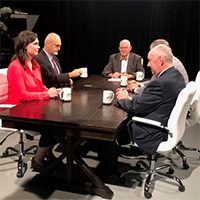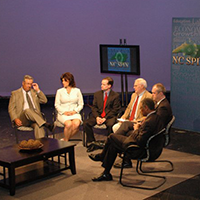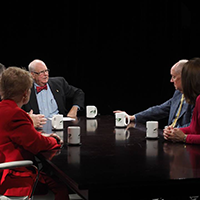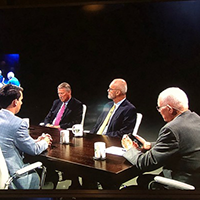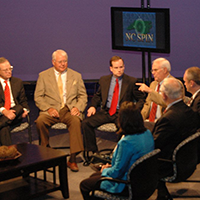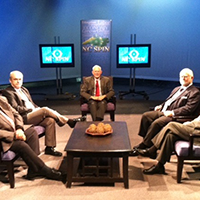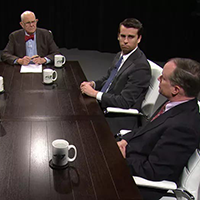Do TV ads work?
Published September 12, 2024
By Gary Pearce
Josh Stein’s ads about Mark Robinson certainly worked.
They worked because they defined Robinson early in the race and because they used the most devastating weapon in politics: Robinson himself on camera saying, “abortion in this country’s not about protecting the lives of mothers – it’s about killing a child because you weren’t responsible enough to keep your skirt down.”
Stein’s ads buried Robinson in a double-digit hole in the polls. It may be impossible for Robinson to climb out.
But what about all the ads we’re seeing during the news, jammed up bumper-to-bumper like rush-hour traffic on I-40?
It’s hard to cut through that clutter.
And by now North Carolinians may have acquired immunity to Republicans’ familiar formula: megadoses of negative ads with scary music, grainy images and dark warnings of invading immigrants and marauding criminals.
Through dozens of campaigns over nearly 50 years, I’ve had a hand in making hundreds of ads. I feel like I’ve seen millions of them.
I suspect that today calls for a calmer and quieter approach, one that is factual and objective and, instead of recycling stale rhetoric, respects and informs the voter:
“In this race, the candidates disagree on abortion. Candidate A believes the government should ban all abortions. Candidate B believes the pregnant woman, not government, should make that decision.”
The ad should sound and look like a voter-information guide from an objective, third-party source.
The challenge for campaigns is reaching low-information voters who are put off by politics.
We’ve tried scaring them and screaming at them for a long time.
Maybe it’s time to lower our voices and talk straight to them.
Or, if you’re lucky like Josh Stein, let your opponent talk straight to them.

